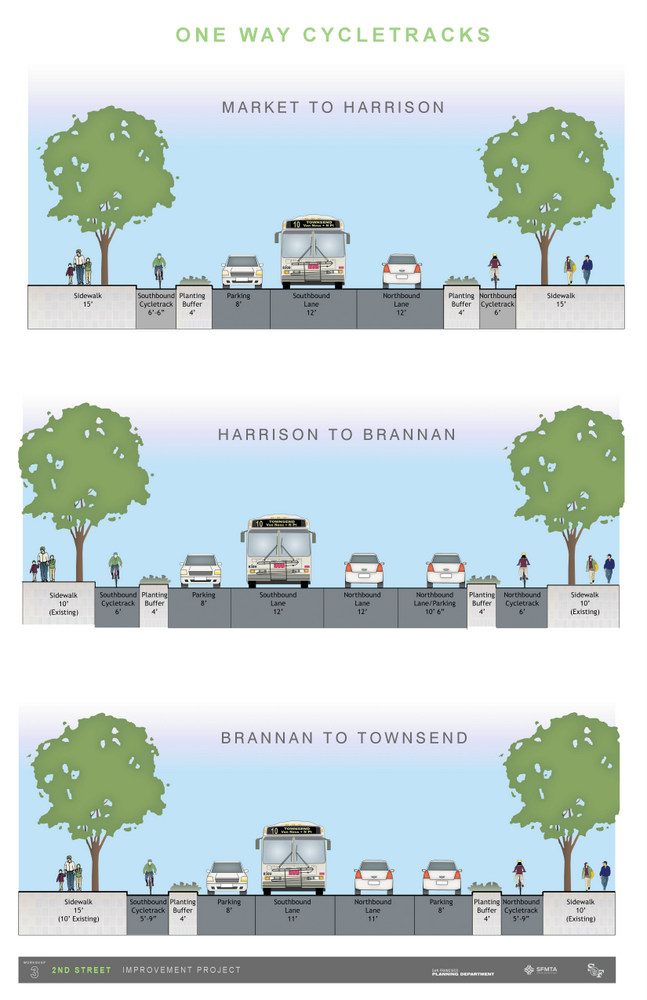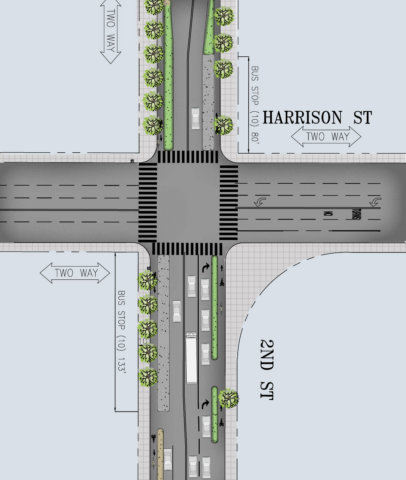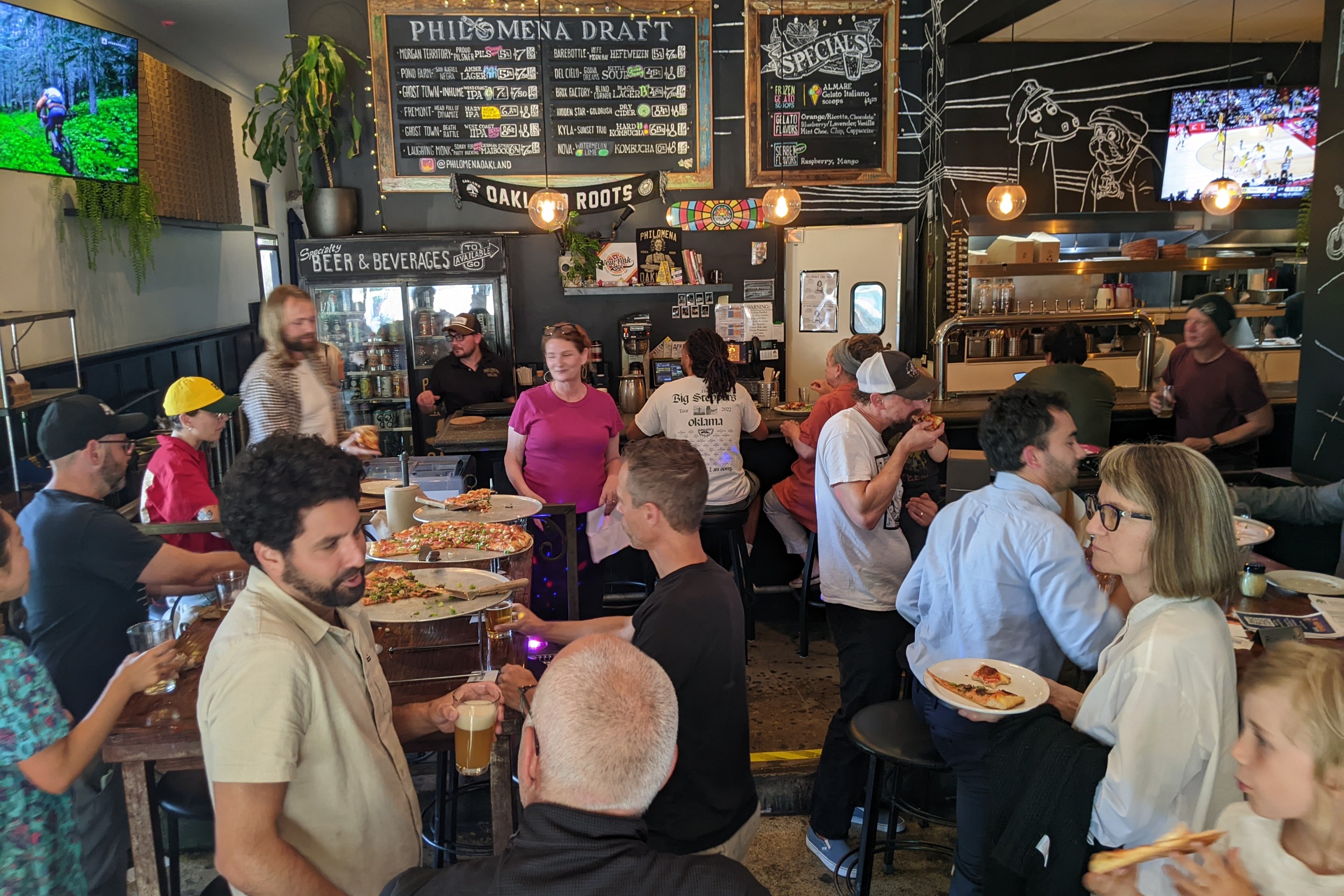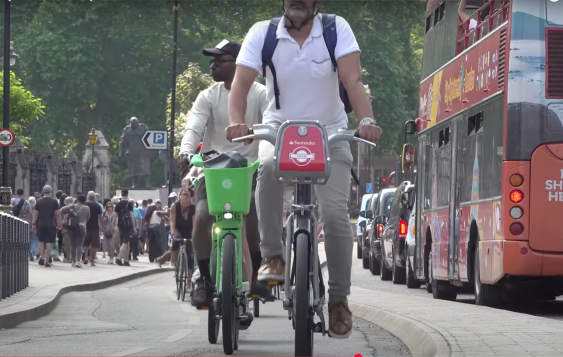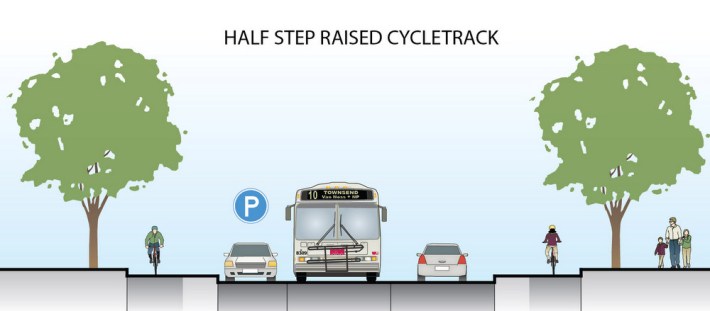
The developing plan to overhaul Second Street with protected bike lanes and pedestrian safety upgrades took another step forward yesterday when staff from the SF Municipal Transportation Agency, the Department of Public Works, and the Planning Department presented more refined design options to the public.
Under the proposal, the entire one-mile length of Second Street would be rebuilt with 6-foot-wide bike lanes next to the sidewalks, separated from motor traffic and car parking by a 4-foot raised buffer, which would be planted in some areas and widen to an 8-foot boarding island at bus stops. It would be the first street to feature bicycle traffic signals at each intersection, creating separate signal phases to reduce conflicts between bicyclists and right-turning drivers. Planners presented three options for the height of the bike lanes: they could be level with the sidewalks, level with the road, or raised about halfway between (which is the norm in Copenhagen).
"It's exciting to see hundreds of Second Street residents and workers developing the plans for the one-way separated bikeway and pedestrian improvements being proposed for Second Street," said Leah Shahum, executive director of the SF Bicycle Coalition. "It's especially encouraging that DPW's survey results show clear preference for this proposal from people who live and work here. This project is sorely needed for Second Street and we hope the city works hard to prioritize getting this project in the ground.”
It will be some time -- three years -- before the safety overhaul is completed. Construction, originally scheduled to begin in July 2014, was pushed back to January 2015, and is expected to take a year. The estimated project cost, which includes the total reconstruction of the street, has also increased to $13.2 million from the original $6-8 million.
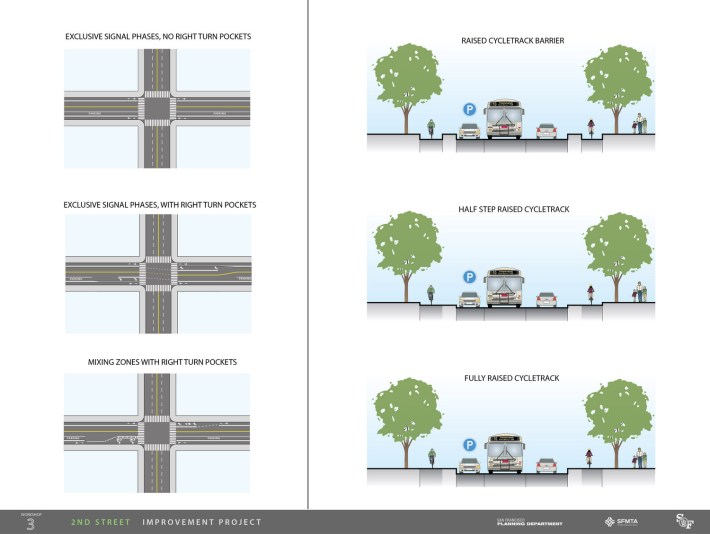
Pedestrian safety upgrades in the project include corner bulb-outs, raised crosswalks at alleys, and the closure of a dangerous dual right turn lane at Second and Harrison Streets. However, while many neighbors have called for widening the skinny 10-foot sidewalks between Harrison and Townsend Streets, DPW's proposal would widen only the sidewalk on the west side of the block between Brannan and Townsend. DPW Project Manager Cristina Olea said further sidewalk widenings wouldn't be worth their relatively high cost, since those sidewalks are lined with utility poles that would diminish the benefits of a wider sidewalk. Moving the utilities underground would add just under $2 million to the project cost, she said.
Walk SF Executive Director Elizabeth Stampe said DPW should widen the sidewalks while it has the chance. "We'd certainly like to see wider sidewalks along both sides of Second Street to provide needed space for walking along an important corridor -- especially for folks going to ball games" at the Giants stadium, she said. "It'd be better to underground the utilities, although that didn't happen on Valencia Street and it's still a vast improvement. Our priority on Second Street is to make sure people feel comfortable and safe the whole way, to support the people already walking and encourage more to do so."
Under the proposal, car traffic lanes would be reduced from four to two, and the remaining lanes would be widened to 12 feet to better accommodate buses. To help prevent traffic delays for Muni's 10-Townsend and 12-Folsom lines, which run on Second, the SFMTA plans to ban left turns at some intersections, though planners are still analyzing traffic patterns to see where that measure would be most appropriate. The SFMTA Board of Directors recently approved a left-turn ban at Second and Mission Streets to speed up the lines in the short term.
Olea said more environmental review may be required for the project than originally anticipated. The plan has changed significantly since a state-required environmental impact report (EIR) was conducted for the original Bike Plan project, which called for adding conventional striped bike lanes. Additionally, because planners have applied for federal funding through the One Bay Area grant, a review under the National Environmental Policy Act would be required. Depending on the level of review required, which will be determined by the Planning Department, it could take 12 to 18 months, Olea said.
A final community meeting is expected to be held in March to field public input on finalizing the designs and update the project schedule.
